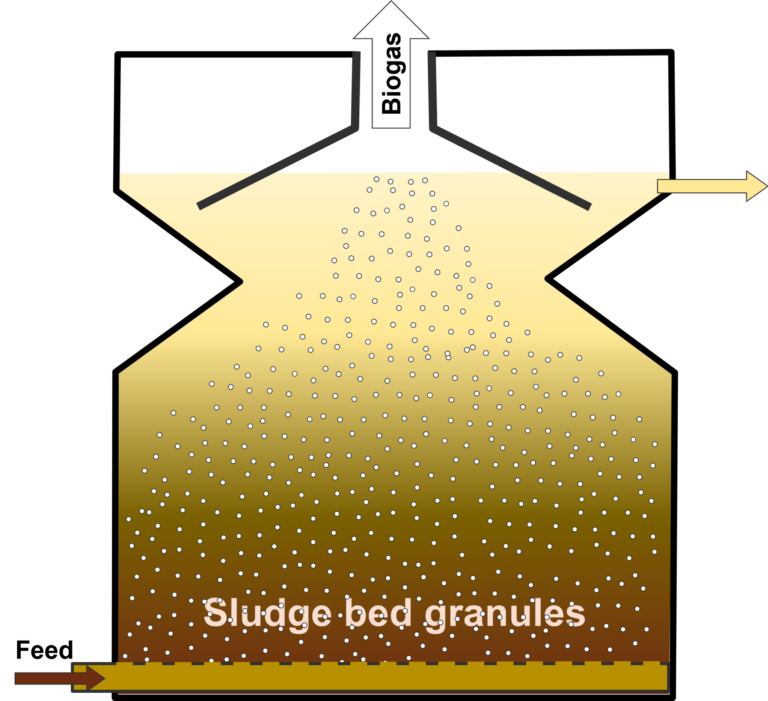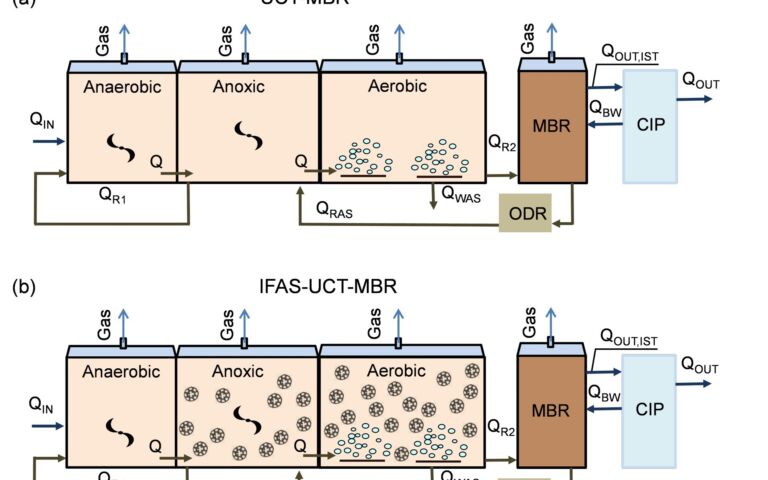UASB technology

UASB technology
An upflow sludge blanket reactor or clarifier is an anaerobic process for treating wastewater. The key feature of a UASB reactor is the formation of a stable, highly-settlable granular sludge bed within the reactor. The settling sludge grains form a stable layer in the reactor as the wastewater flows upwards through it, providing separation of the suspended solids and treated effluent.
Since the process is anaerobic, a substantial part of the organic carbon in the wastewater is converted to methane, along with some carbon dioxide. The biogas generated by the process therefore has a useful calorific value. UASB reactors have a relatively short residence time compared to other anaerobic processes, comparable to aerobic processes check. The sludge yield, however, is lower than for aerobic processes, such that the waste generated is less.

UASB reactors are employed in the treatment of industrial effluents, particularly in industries such as food and beverage, pulp and paper, and pharmaceuticals where organic loads are high and the organic carbon largely anaerobically biodegradable. They are also employed in decentralised wastewater treatment in some tropical regions of the world where temperatures are generally moderate and relatively stable.
While UASB reactors offer many advantages, they are not without challenges. They are sensitive to fluctuations in pH and temperature, as well as to shock loads of organics and/or toxic compounds. These factors can all affect the metabolic rates of micro-organisms and, consequently, the treatment efficiency of the process. Since industrial effluents tend to fluctuate significantly in composition, significant equalisation is often required to mitigate this. Moreover, if there is a risk of a toxic shock from known constituents in the feedwater then pretreatment may be required, further adding to the process footprint and cost.
Most crucially, maintaining the stability of the sludge granules – essential for the proper functioning of upflow reactors – can be problematic when the operating conditions change. There is a risk of significant granule washout in the event of excessive hydraulic or organic loading resulting in the loss of biomass. Small amounts of washout can be catered for through the installation of downstream sedimentation – similar to the CAS process. However, this adds to the process footprint.
Maintaining the proper balance of microorganisms in the sludge blanket and preventing washout demands careful process monitoring and management. Regular maintenance is essential to ensure the stability of the granules to maintain the sludge blanket, and so the longevity and efficiency of the reactor.
Since UASB reactors are anaerobic, they have limited capability for nutrient removal (e.g., nitrogen and phosphorus). Further downstream treatment steps may therefore be required for removal of ammonia and phosphorus.
Finally, the start-up time required for UASBs can excessive – normally more than 100 days to develop the sludge granules if the system is inoculated with activated sludge. They demand a gradual increase in the influent organic load to allow the development of stable granules.
UASB−MBR
Unlike anaerobic MBRs, which have been commercialised and implemented at full scale, there is no equivalent integrated anaerobic membrane process based on the UASB technology. This is because the sludge blanket must necessarily substantially remain undisturbed in the bioreactor for the biological treatment process to be effective: there is little to be gained from recirculating the granules through an integrated membrane separation step.
However, there has been large-scale demonstration of the combination of a UASB reactor with downstream membrane polishing (Niwa et al, 2018), analogous to the CAS−UF/MF polishing configuration widely used in municipal water reuse. With this set-up the membrane displaces the sedimentation step and mitigates against the risk of granule washout.






